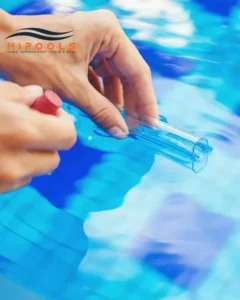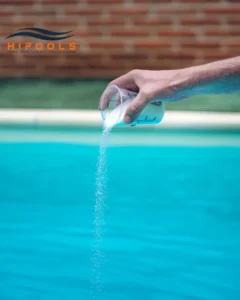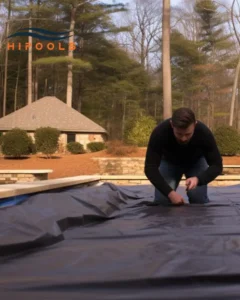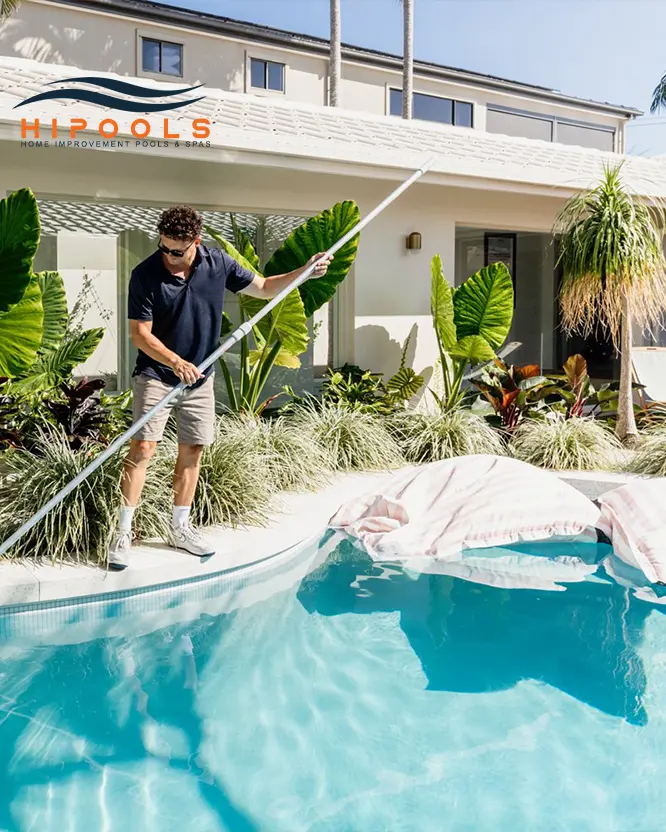Opening and closing a pool in the right manner will ensure its hygiene, safety, and longevity. Whether one is readied for summer swimming or preparing for winterization with respect to protection from freezing temperatures, these seasonal transitions require keen attention.
An elaborately opened pool is made ready for use, while an effectively closed pool protects it during the off season from costly repairs. By adhering to a systematic procedure for every process, you can keep your pool in pristine condition throughout the year. This guide will guide you through the important steps to open and close your pool, some useful tips to help make transitions easier, and typical mistakes to watch out for. Proper knowledge will enable you to have a clean, safe, and efficient pool throughout the year.
Why Seasonal Pool Maintenance Matters
Adequate seasonal pool maintenance is more than an annoyance; it’s a critical ingredient in maintaining the longevity, cleanliness, and safety of your pool. Numerous factors may lead many pool owners to pay little heed to opening and closing their pools, but failing to take these essential measures can lead to serious problems that are both tedious and expensive to rectify. By investing a little effort into proper seasonal maintenance, you can safeguard your investment and have trouble-free use of your pool year-round.
One of the key advantages of best practices for seasonal pool maintenance is that it can extend the lifespan of your pool’s vital parts. Pool liners, pumps, and filters are significant investments, and taking the time to properly open and close your pool can help prevent unnecessary wear and tear. For instance, ensuring that the pool pump is properly winterized can prevent it from seizing up or suffering damage from freezing temperatures. Cleaning and protecting the pool liner during the off-season also prevent cracking, fading, and early aging, hence it can serve for a long time than when not done.

Another very significant reason for seasonal maintenance is the prevention of bacterial growth and ensuring proper water balance. Pools are easily invaded by algae, bacteria, and other water quality problems if proper maintenance is not carried out in the off-season. If a pool is not closed correctly, it becomes a breeding ground for bacteria in the stagnant water. This can be a source of unpleasant odors, skin irritation, or even health risks when the pool is reopened. Ensuring that the water’s pH, chlorine levels, and other key factors are balanced will allow you to maintain safe and healthy swimming water once the season comes.

Moreover, skipping seasonal maintenance can lead to unexpected, emergency repairs that often cost more than preventive care. Water imbalances and improperly stored equipment can result in costly fixes that could have been avoided with a little extra attention during opening and closing. Regular maintenance minimizes the chances of these surprise issues cropping up, saving you both time and money in the long run.
The following chapters will discuss the basics of opening and closing your pool and provide helpful hints to guide you through this process and avoid pitfalls. Investment into seasonal pool care will bring you a cleaner, safer pool with reduced stress and repair costs.

Step-by-Step Guide to Opening Your Pool
Opening Your Pool Properly Sets the Stage for a Problem-Free and Enjoyable Summer Season
Following is a simple, step-by-step guide to help prepare your pool for summer:
- Debris and Cover Removal
Begin by removing any leaves, dirt, or debris which have collected on the pool cover during the winter. After clearing the cover, remove it carefully and examine it for damage, like holes or tears. This way, you can repair anything in need of repair ahead of the next off-season so the debris won’t fall into the pool.
- Reinstall Equipment
Then, reinstall all the pool equipment you removed for winter storage, including the pumps, filters, and heaters. Ensure that all connections are tight and inspect for leaks or wear. Check for damage on hoses or valves and replace any damaged parts. This will ensure that everything works properly for the upcoming season.
- Refill and Balance Water
After having reassembled the equipment, fill the pool water level. Check the pH of the water (optimum range is 7.2–7.6), alkalinity (80–120 ppm), and chlorine level (1–3 ppm). All of these are significant factors in maintaining clear, healthy water. Balance the water chemistry if needed by adding the appropriate chemicals.
- Shock and Sanitize
Once the water is balanced, shock the pool with pool shock to eliminate any accumulated impurities or bacteria during the winter. Shocking the pool rejuvenates water clarity and sanitation. If necessary, add algaecide to discourage algae growth, especially if the pool has stood still for some time.
- Prime the System
Run the pump and filtration system 24 to 48 hours to circulate water and allow the chemicals to mix well. This will eliminate any cloudiness and ensure your pool water is safe for swimming and filtered.
you can watch this YouTube video for more information: Beginner’s Guide to Pool Pumps: What Pool Pump Do I Buy?
Tip Note : Test the water chemistry 2 to 3 times in the first week to ensure the levels of chemicals stabilize and remain in the optimal range.
How Long Does It Take to Open a Pool?
The time it takes to open your pool can vary depending on its size, condition, and whether you’re handling the tasks yourself or hiring a professional. Generally, the process can take anywhere from 3 to 6 hours. This includes removing debris, checking and reinstalling equipment, balancing the water, and ensuring everything is functioning correctly. If your pool has been well maintained over the off-season, it may be shorter. However, if your pool has had a lot of debris or issues over the winter, it may take a bit longer. Either way, beginning early and following the right steps will have your pool ready for a great summer!
How to Close Your Pool for Winter
Closing your pool for winter is as important as opening it. Winterizing your pool correctly will keep it safe from winter damage and make your spring opening easier. Follow these instructions to close your pool for winter:
- Deep Clean
Start by vacuuming dirt off the bottom of the pool and brushing the sides of the pool to remove any algae or dirt build up. Backwash the filter to clean out the filter and make your system totally free of debris. A clean pool will have less issue with algae build up or other problems once opened.

- Balance Chemistry
Correct balancing of chemicals is essential to keep the pool in its state of being throughout the winter. Regulate pH (7.2–7.6), alkalinity (80–120 ppm), and calcium hardness (200–400 ppm) to avoid scaling or corrosion. This process is done to keep your pool water in a stable state, avoiding possible damage to both the pool and equipment when it’s in the off-season.

- Lower Water Level
Drain pool water below skimmer lines to prevent freezing damage. Water remaining in the skimmer will freeze, expand, and potentially crack the skimmer or plumbing. Reducing the water level reduces pressure on pool walls and pipes, maintaining the system for the winter.
Click here for more information regarding How to Lower Pool Water Level
- Winterize Plumbing
Blow out any remaining water in the pipes and fill with antifreeze to prevent freezing. This is a particularly important step for the pump, filter, and other plumbing equipment. With the pipes open, block up the openings so that dirt, debris, or rodents do not enter the system during winter.
- Install a Safety Cover
Lastly, put a sturdy, tight-fitting safety cover on the pool. This will keep debris, leaves, and bugs out of the pool and guard the water and pool equipment against the cold winter weather. A quality cover is important to keep any unwanted material from accumulating and minimize the work required when the pool is opened in the spring.

Don’t Make These Errors
– Chemical imbalance: Failure to balance the pool chemistry means that during the off-season, algae may begin to grow, and it will be harder to clean up when you reopen the pool.
– Leaving water in equipment: Water left in the pump, filter, and pipes can freeze and cause cracks or other damage during winter, leading to expensive repairs.
Can I Close My Pool Myself?
Yes, you can certainly winterize your pool yourself if you’re willing to put in time and effort. The majority of pool owners winterize their pools without professional help, as long as they follow a manual step-by-step guide and have the proper tools (like a pool cover, plumbing blower, and chemicals) at hand. But if you are unsure about any part of the process or your pool has complex systems, you may want to have a professional do it to ensure everything is done right. A properly closed pool will save you time and money when you need to open it up again.
watch for more information How To Close An Inground Pool
Ready to get your pool winter-ready? Let Hi Poolss help with professional pool closing services! We offer expert assistance in winterizing your pool and can provide free estimates to ensure your pool stays in top condition. Contact us today to schedule your pool closing and enjoy peace of mind all winter long!
Conclusion
Seasonal pool openings and closings are the secret to a healthy, long pool life. By staying on top of seasonal maintenance, you’re protecting your investment, offering a safe and inviting swimming environment, and avoiding expensive repairs down the line. At Hi Poolss, we know that each pool is unique, and whether you prefer to do it yourself or with the help of professionals, we’re dedicated to making the process simple and stress-free. Allow us to manage the specifics so that you can focus on the most essential aspect—year upon year of pool fun.
Need Expert Guidance? Let Us Help!
Don’t stress over the seasonal tasks—Hi Pools has you covered! Reach out to us for a free estimate or personalized advice. Call us today, and we’ll take care of the hard work, ensuring your pool stays in perfect shape all year long.
We’re here to make your pool experience effortless and enjoyable!


No comment